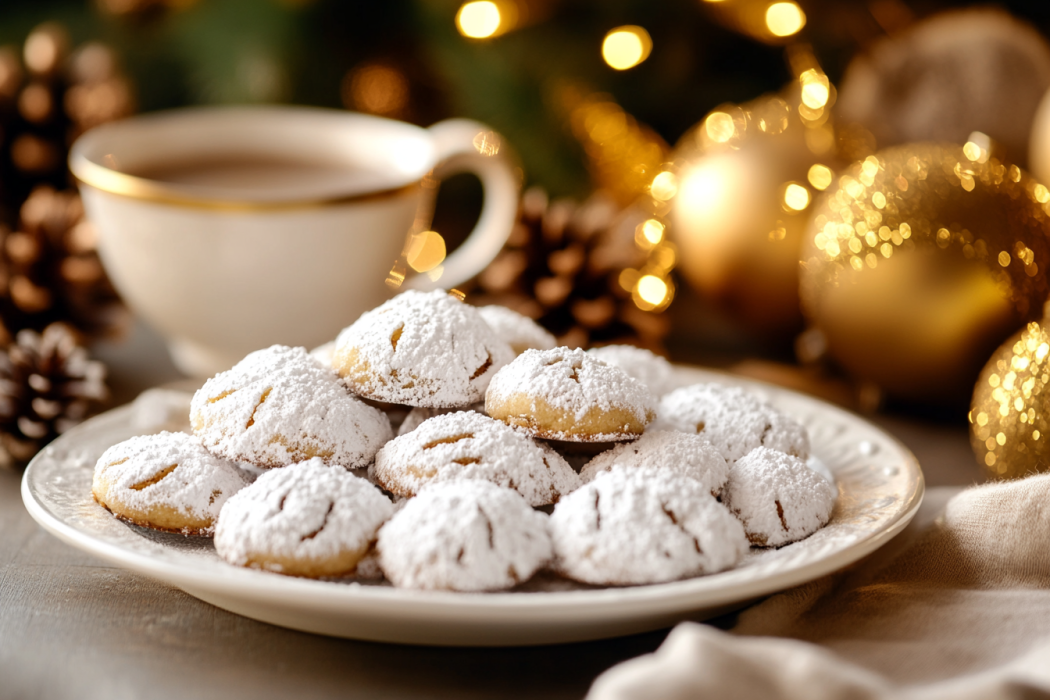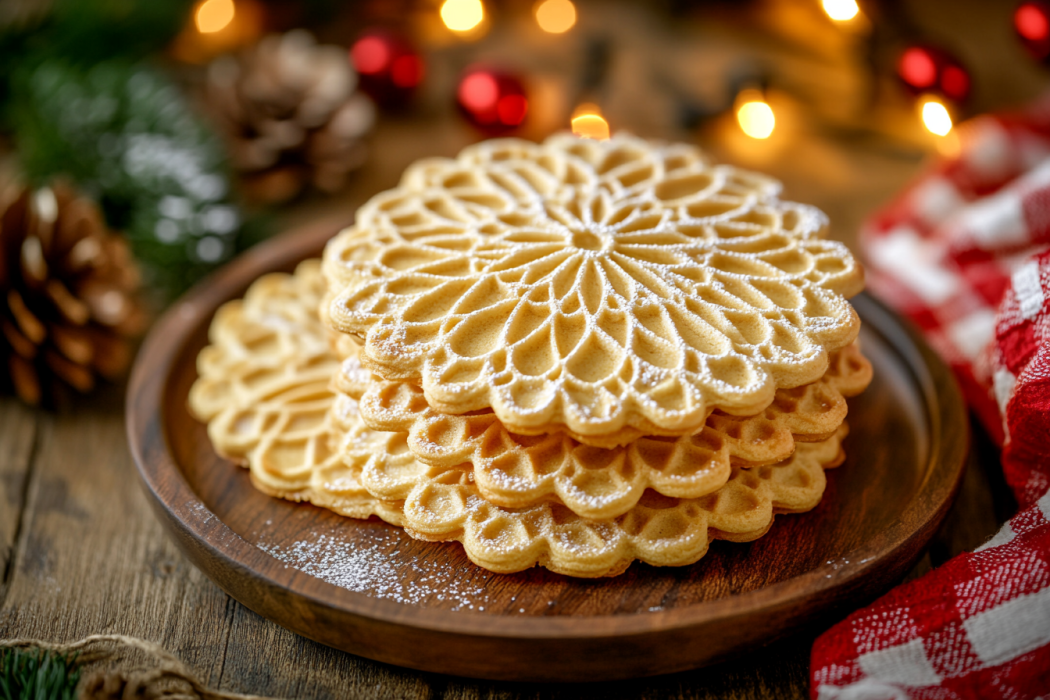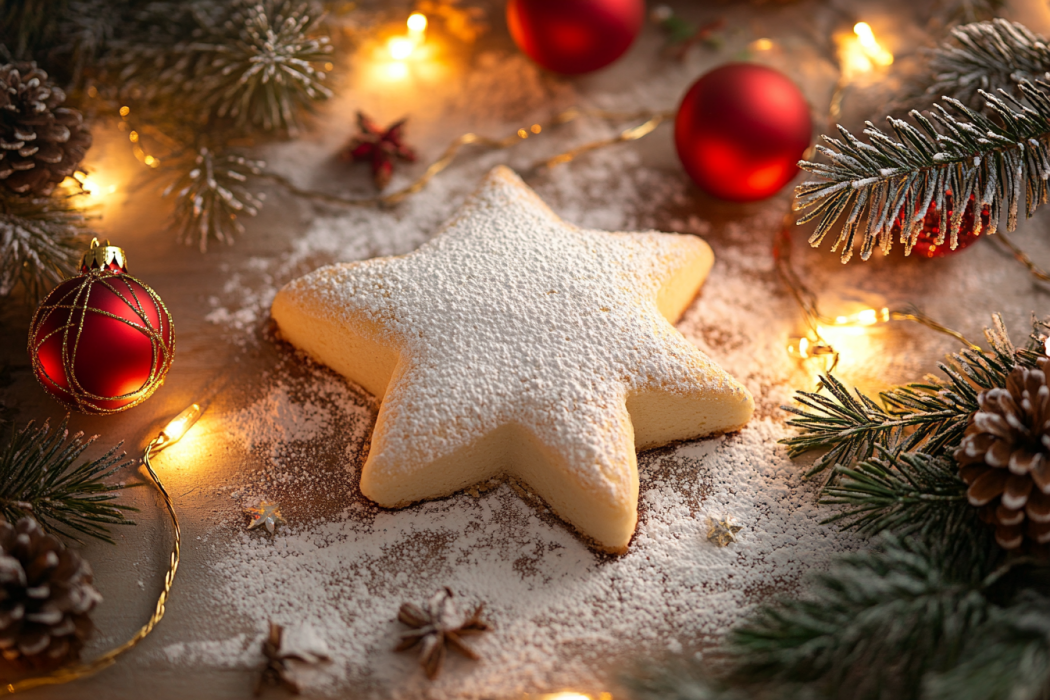Indulge in the rich and decadent world of Italian Christmas desserts, a delightful celebration of the country’s exceptional culinary heritage. From the iconic panettone of Milan to the honey-glazed struffoli of Naples, these beloved holiday treats captivate the senses and bring joy to Italian tables during the most wonderful time of the year.
Explore the diverse regional variations that showcase the unique flavors and traditions of each corner of Italy. Uncover the ancient origins and modern interpretations of these cherished confections, each one a testament to the enduring culinary artistry of the Italian people.
Key Takeaways
- Discover the rich history and cultural significance of traditional Italian Christmas desserts.
- Explore the diverse regional specialties that make Italian holiday baking so unique.
- Learn about the key ingredients and traditional preparation methods that define these beloved treats.
- Gain insights into serving suggestions and decorative tips to elevate your Italian Christmas dessert experience.
- Uncover wine pairings that perfectly complement the flavors of these Italian holiday delicacies.
The Rich Heritage of Italian Christmas Desserts
The Italian Christmas dessert tradition is a rich tapestry of regional variations, each with unique history and cultural significance. From the northern regions to the sun-soaked southern tips of Italy, these sweet treats tell stories of heritage and tradition.
Passed down through generations, these desserts blend ancient recipes with modern touches, creating a timeless celebration of Italian holiday flavors.
Regional Variations Across Italy
The diversity of Italian holiday desserts is a reflection of the country’s rich culinary heritage. Each region boasts its own signature creations, showcasing the ingenuity and creativity of local bakers. In the northern Lombardy region, the beloved panettone reigns supreme, while the golden pandoro hails from the historic city of Verona. Venturing south, the honey-glazed struffoli are a cherished specialty of Campania, and the spiced panforte is synonymous with the Tuscan city of Siena.
Ancient Origins and Modern Traditions
Many of these Italian holiday desserts have roots in ancient times, with chefs fine-tuning recipes and passing them down through the centuries. The delicate pizzelle cookies, for instance, have been a staple of Italian Christmas celebrations since the 8th century. Meanwhile, the torrone nougat confection has been a beloved treat since the 13th century, evolving from its humble beginnings to incorporate innovative flavor profiles and artisanal techniques.
As the traditions of Italian Christmas desserts have endured, they have also adapted to the changing tastes and preferences of modern consumers. Regional variations continue to thrive, while new interpretations and creative twists on classic recipes have emerged, ensuring that these sweet delicacies remain an integral part of the Italian holiday experience.
Traditional Panettone: Milan’s Christmas Gift to the World
When the holiday season approaches in Italy, one delectable treat takes center stage: panettone, the iconic Christmas cake that has captivated the nation for centuries. Originating in Milan, this melt-in-your-mouth delight has become a beloved staple of Italian yuletide celebrations, spreading its sweet influence across the globe.
The origins of panettone can be traced back to the 15th century, when a young Milanese nobleman named Ughetto degli Atellani reportedly created the first version of this famous dessert. Inspired by his love for a baker’s daughter, Ughetto experimented with a rich, buttery yeast dough, eventually crafting the distinctive dome-shaped loaf that we recognize today.
- Panettone is made with a unique yeast-risen dough that is kneaded and proofed over several hours, resulting in a soft, airy crumb.
- The traditional recipe includes dried fruits, such as raisins and candied citrus peel, as well as a touch of vanilla and spices to enhance the flavor.
- The dough is baked in tall, cylindrical molds, giving panettone its signature tall, rounded shape.
Today, panettone has become a beloved Italian Christmas cake enjoyed not only in Italy but also around the world. Its rich, buttery taste and festive presentation make it a cherished part of holiday celebrations, a true famous dessert in Italy that has captured the hearts and palates of countless devotees.
Pandoro: The Golden Bread of Verona
Pandoro, the iconic Italian Christmas dessert, is a must-have on every Italian Christmas table. Originating from the northern city of Verona, this golden-hued cake has become a beloved tradition across the country and beyond.
Classic vs Contemporary Variations
The classic pandoro recipe is a time-honored tradition, featuring a soft, pillowy texture and a delicate, buttery flavor. However, modern bakers have experimented with innovative twists on this yuletide classic. Some versions incorporate fragrant spices like vanilla, cinnamon, or citrus zest, while others feature creative fillings such as mascarpone cream or chocolate hazelnut spread.
Serving Suggestions and Decorative Tips
Pandoro is versatile and can be enjoyed in a variety of ways. The classic approach is to dust it generously with powdered sugar, creating a snow-like dusting that evokes the winter season. For a more indulgent treat, serve slices of pandoro with a side of rich custard or whipped cream. Creative bakers have also been known to transform pandoro into stunning centerpieces, decorating it with fresh berries, edible flowers, or even small Christmas ornaments.
Whether you opt for the traditional recipe or a modern interpretation, pandoro is sure to be the star of your Italian Christmas festivities, delighting your guests with its golden splendor and irresistible flavors.
Struffoli: Honey-Glazed Holiday Spheres
As the Christmas season approaches, the tantalizing aroma of struffoli wafts through the streets of Naples and across southern Italy. These delightful fried dough balls, drenched in a sweet honey glaze, have become a beloved Italian Christmas dessert and an integral part of the sweet Christmas tradition in Italy.
The origins of struffoli can be traced back to ancient Greek and Roman culinary traditions, where similar fried pastries were commonly enjoyed during festive occasions. Over the centuries, this beloved confection has evolved, taking on unique regional variations across Italy’s diverse culinary landscape.
In the Neapolitan tradition, struffoli are typically fashioned into small, bite-sized balls, often decorated with candied fruit, sprinkles, or even a dusting of powdered sugar. The dough is made from a simple mixture of flour, eggs, and a touch of lemon zest, which is then deep-fried to golden perfection.
The true magic of struffoli, however, lies in the honey glaze that coats each delicate sphere. This sticky, sweet coating not only adds a delightful flavor but also helps bind the struffoli together, creating a festive wreath-like presentation that is a hallmark of the dish.
As with many Italian culinary traditions, the preparation and serving of struffoli can vary from region to region. In some areas, the dough balls may be shaped into small pyramids or even shaped like tiny Christmas trees, adding a playful and visually striking element to the dessert.
Whether enjoyed as a mid-afternoon snack or as a sweet finale to a traditional Italian Christmas feast, struffoli are a beloved and cherished part of the Italian Christmas dessert landscape. Their irresistible combination of crisp, honey-coated dough and nostalgic flavors make them a must-try for anyone seeking to experience the true essence of Italy’s sweet Christmas tradition.
Italian Christmas Desserts: Essential Holiday Treats

The rich culinary heritage of Italy is reflected in its iconic Christmas desserts, which have captivated taste buds around the world. At the heart of these delectable treats are a carefully curated selection of key ingredients and traditional preparation methods that give them their distinctive flavors and textures.
Key Ingredients in Italian Christmas desserts
Italian Christmas desserts are renowned for their use of premium nuts, dried fruits, and aromatic spices. From the buttery richness of almonds and hazelnuts to the chewy sweetness of figs and dates, these natural ingredients lend depth and complexity to each mouthwatering creation. The judicious addition of spices like cinnamon, cloves, and anise further enhances the festive allure of these holiday delights.
Traditional Preparation Methods for Italian Christmas desserts
- Slow, meticulous kneading and shaping techniques are essential to achieving the perfect crumb and texture in classic panettone and pandoro breads.
- The labor-intensive process of frying and glazing struffoli dumplings in honey ensures their characteristic crunchy exterior and soft, pillowy interior.
- The intricate layering and pressing of nougat in torrone confections results in its signature chewiness and distinctive flavor profile.
| Ingredient | Contribution to Italian Christmas Desserts |
|---|---|
| Almonds | Lend a buttery richness and delicate crunch to baked goods |
| Dried Figs | Provide a chewy, sweet-tart contrast in cakes and tarts |
| Cinnamon | Imparts a warm, fragrant note that evokes the holiday season |
| Anise | Lends a licorice-like flavor and aroma to traditional confections |
The careful crafting of these Italian Christmas desserts elevates them to the status of beloved holiday treats, both within Italy and around the world.
Torrone: Italy’s Beloved Nougat Confection
Torrone, a hallmark of Italian Christmas desserts, is a cherished nougat confection that has captivated taste buds across the country for centuries. This specialty during the Christmas season is celebrated for its unique blend of flavors and rich, decadent texture.
Originating from the northern Italian region of Lombardy, the history of torrone can be traced back to the 15th century. Legend has it that the recipe was first created to honor the marriage of the Duke of Milan and his bride. Over time, this delectable treat has evolved, with various regional variations emerging across Italy.
- Torrone Duro: A hard, brittle nougat made with honey, egg whites, and toasted almonds or hazelnuts.
- Torrone Morbido: A soft, chewy nougat that melts in your mouth, often infused with citrus notes or candied fruit.
- Torrone Gianduia: A creamy, chocolate-hazelnut version of the classic torrone, popular in the Piedmont region.
Regardless of the regional differences, torrone remains an integral part of the Italian Christmas desserts tradition. Families gather to savor this delightful confection, often serving it alongside a glass of sweet, fortified wine as a fitting end to a festive meal.
“Torrone is more than just a dessert; it’s a symbol of Italian culinary heritage and the joy of the holiday season.”
As the Christmas season approaches, the aroma of freshly made torrone fills the air, reminding everyone of the rich cultural traditions that make Italian desserts so beloved around the world.
Panforte: Siena’s Spiced Christmas Delicacy
As the holiday season approaches in Italy, one dessert stands out as a cherished tradition: panforte, a dense, spiced fruit and nut cake hailing from the charming city of Siena. This beloved treat has a rich history that dates back centuries, woven into the very fabric of Italian Christmas celebrations.
Historical Significance
The origins of panforte can be traced to the Middle Ages, when the people of Siena crafted this decadent confection as a way to celebrate the arrival of winter. Initially, the recipe was a simple combination of nuts, dried fruits, honey, and a careful blend of aromatic spices, creating a flavor profile that was both indulgent and comforting. Over time, panforte became a symbol of Sienese pride and an integral part of the region’s culinary heritage.
Modern Interpretations
While panforte’s traditional recipe has largely stayed the same, modern bakers have added their own creative touches. Some experiment with different nuts or a hint of citrus zest, while others incorporate chocolate or spiced liqueurs to enhance the flavor. Despite these updates, the dessert’s rich, dense texture and its ability to capture the holiday spirit remain timeless.
Today, panforte continues to hold its place as a cherished Italian Christmas dessert, reflecting the country’s culinary heritage. Whether enjoyed on its own or as part of a festive spread, it delights the senses and celebrates the enduring traditions of the holiday season.
Pizzelle: Delicate Italian Waffle Cookies

Pizzelle, delicate waffle cookies, are a beloved part of Italy’s Christmas dessert tradition, gracing tables nationwide.
Originating in Abruzzo, pizzelle are made using a specialized iron, which creates their beautiful, intricate patterns.
The process is a labor of love, with families passing down recipes and techniques through generations.
While classic pizzelle feature vanilla, regional variations exist. Molise uses anise, while Sicilian versions include lemon or orange zest.
Regardless of flavor, these thin cookies capture the essence of Italian Christmas desserts and their rich heritage.
“Pizzelle are a true expression of Italy’s rich culinary traditions, weaving together the country’s love for family, celebration, and the sweetness of the holiday season.”
Whether enjoyed on their own or paired with a steaming cup of Italian coffee, pizzelle continue to delight and captivate the senses. As a beloved sweet Christmas tradition in Italy, these waffle cookies serve as a delicious reminder of the country’s enduring culinary legacy.
Italian Christmas Desserts: Cookie Assortments
Indulge in the delectable world of Italian Christmas cookies, where each region showcases its own unique specialties. From the crisp biscotti to the chewy amaretti, these holiday treats hold a cherished place in Italian celebrations and gifting traditions.
Regional Cookie Varieties
Across the Italian peninsula, each province and city boasts its own signature Italian Christmas cookies. In the north, you’ll encounter the buttery Tozzetti of Umbria; meanwhile, the southern regions enchant with the honey-dipped Struffoli. Similarly, Tuscany stands out for its renowned classic Biscotti di Prato, which are cherished by many. In contrast, Sicily captivates with its almond-based Paste di Mandorle, offering a delightful treat for those who appreciate rich flavors.
- Tozzetti (Umbria)
- Struffoli (Southern Italy)
- Biscotti di Prato (Tuscany)
- Paste di Mandorle (Sicily)
Family Recipe Traditions
Beyond regional specialties, many Italian Christmas desserts cookies are deeply rooted in family recipe traditions, passed down through generations. These cherished recipes often carry personal stories and cultural significance, making each bite a celebration of Italy’s rich culinary heritage.
“Christmas without my grandmother’s Ricciarelli is simply unimaginable. That delicate almond-scented cookie is the heart and soul of our family’s holiday celebrations.”
| Cookie Variety | Signature Ingredients | Preparation Method |
|---|---|---|
| Ricciarelli | Almonds, egg whites, sugar | Shaped into diamond-like forms, then baked and dusted with powdered sugar |
| Cartellate | Flour, olive oil, red wine, honey | Twisted into intricate knots, then fried and soaked in a honey-wine syrup |
| Canestrelli | Flour, butter, sugar, egg yolks | Shaped into delicate flower-like forms, then baked until lightly golden |
Whether enjoying regional specialties or a cherished family recipe, Italian Christmas cookies bring joy and showcase Italy’s rich culinary heritage. These sweet treats are an essential part of the holiday experience, adding festive flavors to tables worldwide.
Wine Pairings for Italian Christmas Desserts
Here’s the revised version with shorter sentences, all under 20 words:
Enhancing your Italian Christmas desserts involves pairing them with the perfect wine. Classic options include Vin Santo and Moscato d’Asti.
Italian dessert wines offer a delightful variety to complement holiday treats. Each pairing enhances the flavors of traditional confections.
For panforte, Vin Santo is ideal with its nutty, spiced notes. Its rich flavor balances the dessert’s decadence perfectly.
Moscato d’Asti’s vibrant acidity and delicate sweetness make it an excellent choice for crisp pizzelle, enhancing their light texture.
Torrone, the beloved Italian nougat, perfectly complements the festive Christmas season when paired with the smooth and velvety Marsala wine. Additionally, this classic combination enhances the holiday experience, offering a delightful balance of sweetness and richness. The interplay of the wine’s caramel and almond notes with the confection’s honeycombed texture is simply divine.
Whether you choose classic panettone or regional Italian cookies, the right wine enhances your dessert experience beautifully.
Explore Italian dessert wines to find the perfect pairing and elevate your holiday table with delightful flavor combinations.

Italian Christmas Desserts
Ingredients
- 3 cups all-purpose flour For dough-based desserts like panettone and pandoro
- 1 cup honey Used in struffoli and torrone
- 1 ½ cups granulated sugar For sweetening various desserts
- ½ cup butter Adds richness to cakes like pandoro
- 3 large eggs Essential for binding and structure
- 1 teaspoon cinnamon Aromatic spice used in panforte
- 1 cup almonds Common in torrone and biscotti
- ½ cup candied citrus peel Traditional in panettone
- 1 cup raisins Adds sweetness to panettone
- ½ teaspoon anise extract For authentic pizzelle flavor
Instructions
- Prepare panettone by kneading a yeast-risen dough and allowing it to proof for several hours before baking.
- For pandoro, mix a buttery dough, mold into a star shape, and dust with powdered sugar before serving.
- Make struffoli by rolling dough into small balls, deep-frying them, and coating them in warm honey glaze.
- For torrone, mix honey, egg whites, and toasted nuts, then press the mixture into a firm nougat shape.
- To prepare panforte, combine nuts, dried fruits, and spices, then bake into a dense, spiced cake.
- Bake pizzelle using a special iron, creating thin, crisp cookies with intricate patterns.
- Pair Italian Christmas desserts with wines like Vin Santo, Moscato d'Asti, or Marsala for a perfect holiday experience.
Notes
Conclusion
Italian Christmas desserts showcase the country’s vibrant culinary heritage. From Milan’s Panettone to Naples’ Struffoli, these treats captivate hearts worldwide.
Their rich traditions and regional variations highlight the value of preserving culture. Each dessert, from Verona’s Pandoro to Siena’s Panforte, tells a story of family, community, and festive joy.
This holiday season, explore the timeless flavors of Italian sweets. Let these treats bring cherished memories and a touch of la dolce vita to your celebrations.
FQAs
What sweet is a italian christmas desserts tradition ?
Panettone, a sweet yeast bread with dried fruits and nuts, is a beloved Christmas tradition in Italy.
What is a famous dessert in Italy?
Tiramisu, a creamy coffee-flavored dessert, is one of the most famous and beloved Italian desserts.
What cake is eaten in Italy at Christmas
Panettone and pandoro are two traditional cakes enjoyed in Italy during the Christmas season.
Which of the following Christmas Italian desserts is a specialty during the Christmas season?
Torrone, a nougat confection, is a specialty in Italy during the Christmas season.
